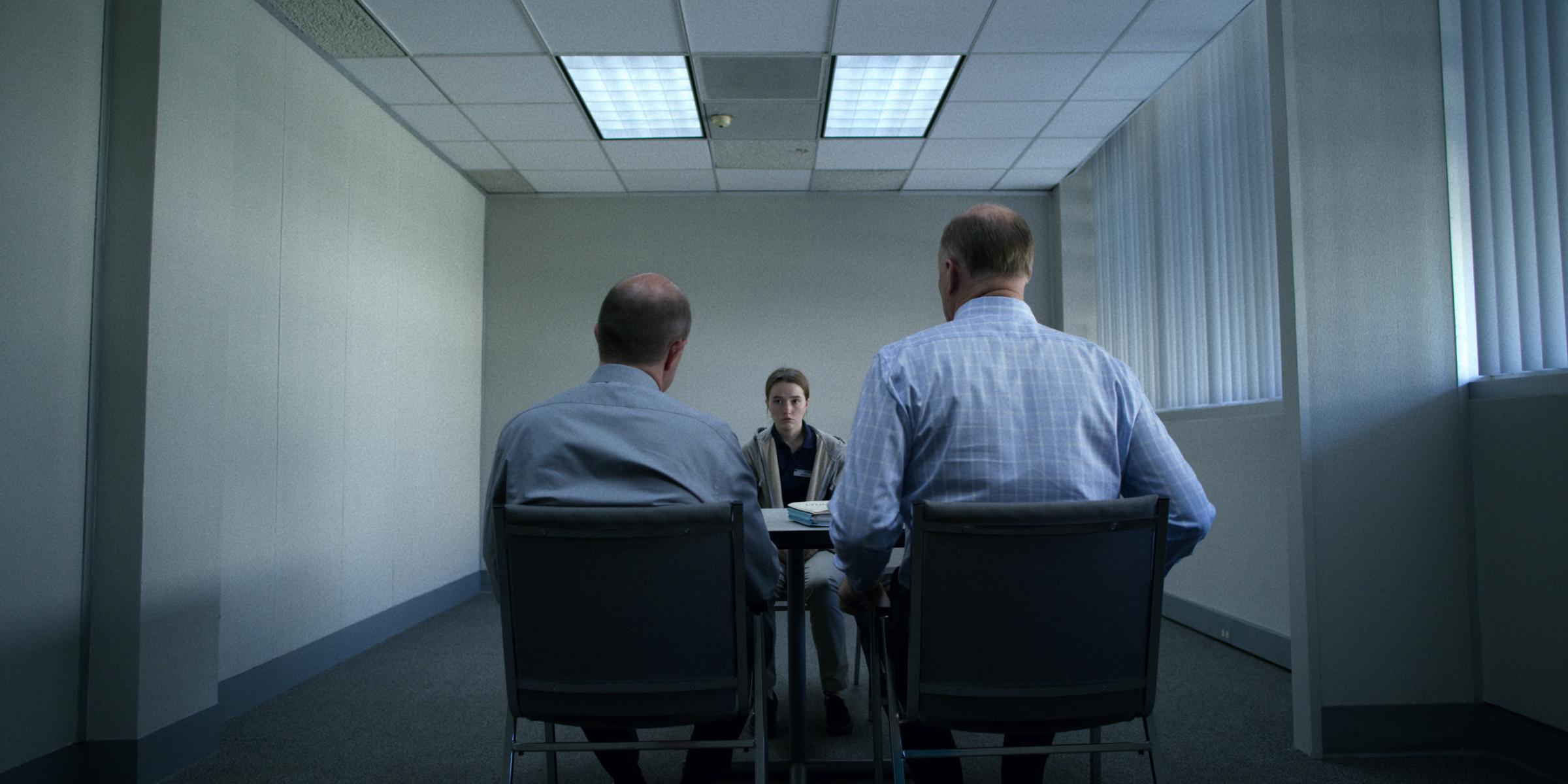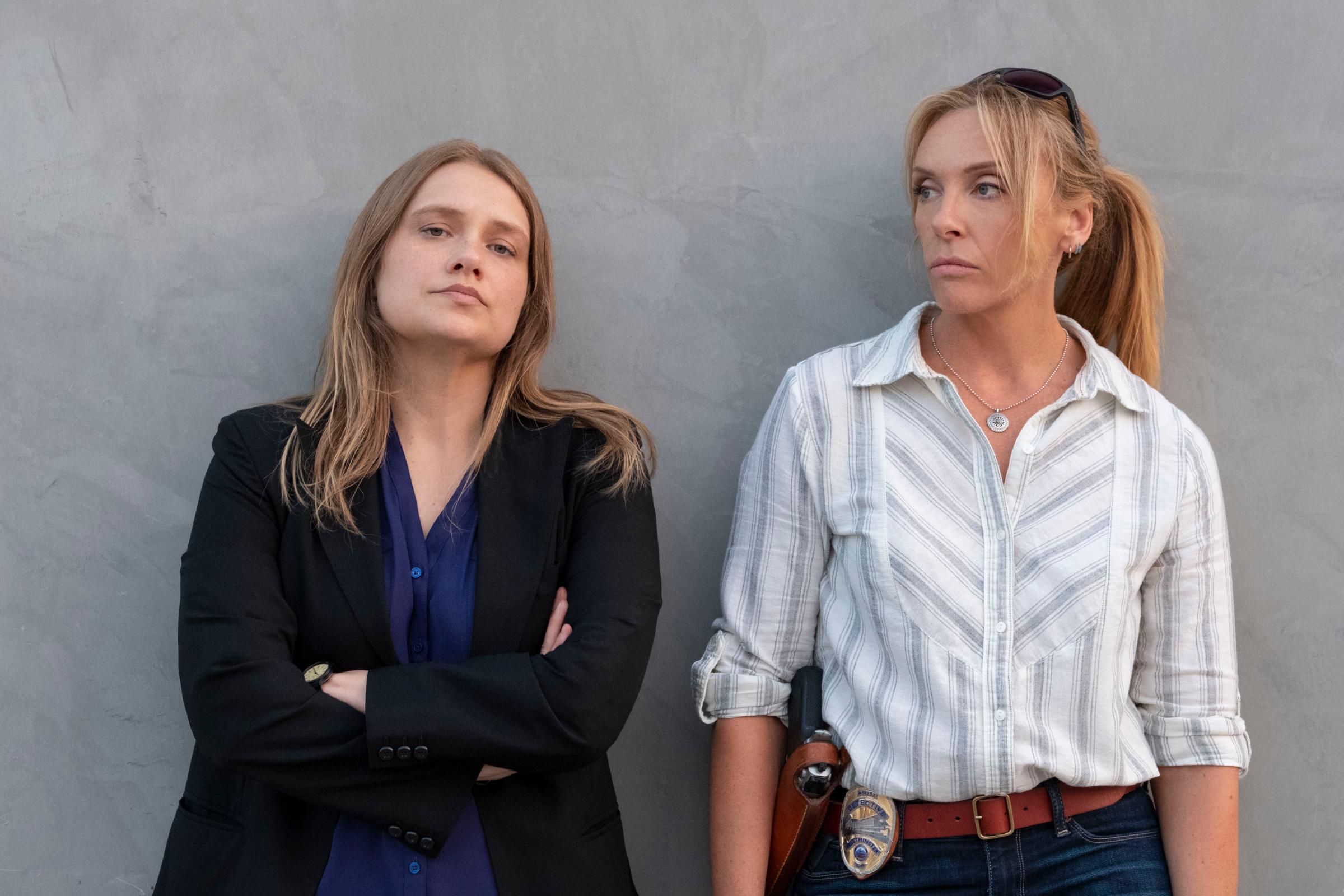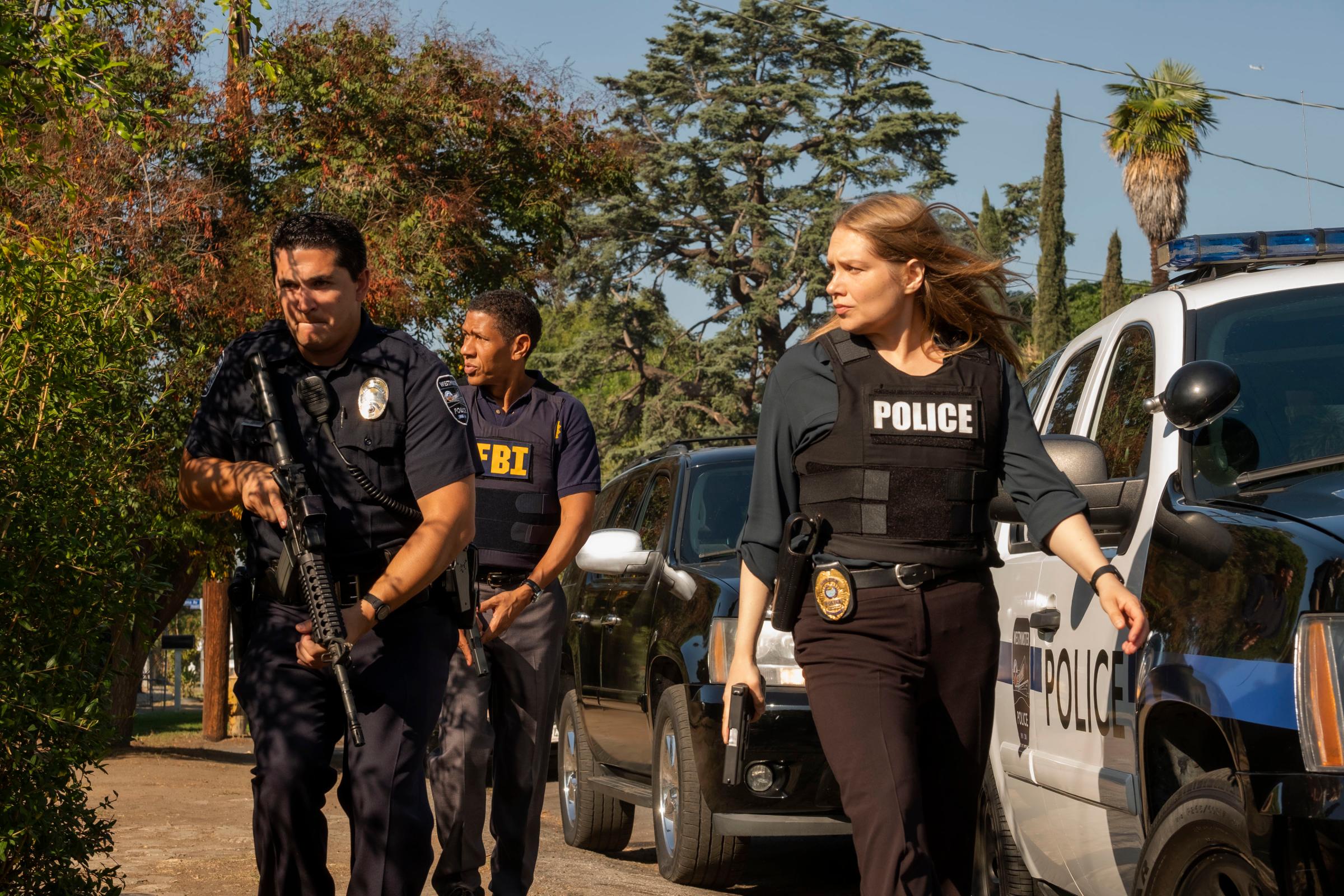In Washington state, Marie Adler, 18, reports to police that a man broke into her apartment, tied her up and raped her. She’s told to be more specific about everything—the details of how she was tied up, how exactly she was sexually assaulted—and she recounts everything she can. Moments later, two detectives arrive to question Marie and demand that she repeat herself.
Marie, as played by Katilyn Dever in Netflix’s new eight-episode series Unbelievable, is asked to share her story over and over again by the people who are meant to be helping her, though they seem to have little regard for the psychic toll of reliving one’s trauma. The series, created by Erin Brockovich screenwriter Susannah Grant with writers that include the novelists Michael Chabon and Ayelet Waldman, is based on a 2015 article published in a joint project by ProPublica and The Marshall Project that won a Pulitzer prize. As both the article and the show depict, Marie’s report is bungled almost immediately. After the people closest to Marie, including one of her former foster mothers, tell police they have doubts about whether her story can be trusted, the male detectives hound Marie into recanting her report. They then charge her with filing a false report. Marie, who grew up in foster care and survived a childhood of frequent abuse, loses her friends and what little support she’s accrued as she emerges into early adulthood.
The story is true, and deeply devastating, if not exactly shocking in a real-life climate where, according to the Rape, Abuse and Incest National Network (RAINN), three out of four rapes go unreported, often because victims fear retaliation or that police will not help them. What happens next in Unbelievable is also true, though it’s not the kind of ending we’re used to hearing about. Three years after Marie reports being raped, two female detectives in Colorado (played by Merritt Wever and Toni Collette) begin investigating a string of assaults with some clear similarities to one another—and which they eventually learn are similar to what Marie recounted before recanting. Unbelievable splits into two time periods—one follows Marie in 2008 as she lives through the fallout of her assault and its mishandling, and the other dives into the detectives’ investigation as they rush to track down a serial rapist in 2011.
Unbelievable hews fairly closely to the ProPublica/Marshall Project story, with some dramatizations based on details shared in the article. Here’s the true story behind the Netflix series, which debuts Sept. 13.
How police mishandled Marie Adler’s report

The crux of Unbelievable is in how the police officers and detectives originally assigned to Marie’s case use interrogation tactics and bad information, wearing her down to the point at which she seems to feel it would be easier if she just says she lied about being raped. As Unbelievable depicts it, the detective repeatedly asks Marie about what she did after she was raped—who she called, why she called them, what exactly she did—and starts narrowing in on the inconsistencies in her story. In the show, Marie is seen getting increasingly flustered as this happens. Eventually, based on the inconsistencies and the word of Marie’s foster mother—who doubts Marie’s account and shares a story with the officer that portrays Marie as attention-seeking—police persuade Marie to take back her report of being raped. After dropping the case, they also charge her with filing a false report, which the series makes a point of pointing out is a rare charge, adding insult to injury.
The story of insufficiently trained male detectives messing up a sexual assault case rings true for anyone who’s watched a lot of crime procedural dramas. And in the case of Unbelievable, the events did happen as portrayed. According to ProPublica/Marshall Project, the woman at the center of a 2008 rape case in Lynwood, Washington, who the story refers to by her middle name, Marie, reported being raped by a man who tied her up. Police investigated her account and asked her to repeat it. An officer told Marie he’d found several inconsistencies between what she’d said and what witnesses, including one of Marie’s ex-boyfriends and a former foster mother, had said. Another officer told Marie he believed she had made up her account. Eventually, Marie recanted her report. She was later charged with a gross misdemeanor of filing a false report, and took a plea deal that involved going on probation and paying a $500 fine. The ProPublica/Marshall Project story notes that Marie’s lawyer was surprised she was charged with filing a false report, as her story had not caused harm to anyone. He figured police were upset that their time had (they presumed) been wasted.
Three years later, as both the Netflix series and the ProPublica story reveal, detectives in Colorado investigating a string of sexual assaults, with strikingly similar details to what Marie initially reported, find proof that her account was true. Later, Marie settled for $150,000 after suing the city of Lynwood, ProPublica reported.
How two detectives joined forces when it became clear there were multiple linked sexual assaults

In Unbelievable, Merritt Wever plays detective Karen Duvall, who investigates a rape case in 2011 that turns out to have clear similarities to what Marie reported, though she’s not aware of Marie’s case when she begins her investigation. As Unbelievable shows, a small piece of information passed to Duvall by her husband, Max (Austin Hébert), changes the course of the case: Max, a police officer in a different jurisdiction, shares that a detective in his department worked on a similar rape case several months earlier.
“Did he have a backpack?” Max asks as he gets ready to go into work. “The guy, when he did it, was he wearing a backpack? We had one like that.” When Duvall confirms there was a backpack, Max suggests she reach out to his department’s detective, Grace Rasmussen, played by Toni Collette.
Rasmussen is a tough, beer-swigging, intimidating detective—a great foil to Duvall’s earnest, devout Christian. But both are portrayed as equally hardworking and determined. It takes a beat for Duvall to convince Rasmussen that the cases have parallels that are too obvious to ignore. In each case, they report, the perpetrator had a backpack and forced his victims to take timed showers after he raped them. The details of the assaults themselves also sound the same to Duvall and Rasmussen. And tellingly, the suspect they’re searching for left both crime scenes almost completely clean, making the detective work especially challenging.
According to the ProPublica investigation on which the Netflix series is based, the detectives who tracked down the serial rapist in real life met following a similar trajectory. Stacy Galbraith, the inspiration for Wever’s character, had just begun investigating a rape case in January 2011. In that case, a 26-year-old student reported that a man, wearing a black mask, tied her up and raped her repeatedly over a period of four hours and documented it with a digital camera. Galbraith recounted the details to her husband, David, later that night. David, who worked at a police department in Westminster, Colorado, said the details were very similar to a case that had been reported there. “We have one just like that,” he said. The very next day, Galbraith reached out to Westminster detective Edna Hendershot (the inspiration for Collette’s character). The two detectives agreed to pool their resources for the investigation almost immediately. Per ProPublica:
Hendershot right away recognized the potential in collaborating and in using every tool possible. “Two heads, three heads, four heads, sometimes are better than one, right?” she said. So did Galbraith. Her department was small — a little more than 40 officers serving a town of about 20,000. It only made sense to join forces. “I have no qualms with asking for help,” Galbraith said. “Let’s do what we can do to catch him.”
This partnership proves to be one of the most valuable connections in the investigation, as shown by both the story written about the two women and the Netflix series. Before Galbraith came to Hendershot with her case, the Westminster detective had not made the headway necessary on her case, that of a 59-year-old woman who reported being raped under circumstances similar to those of Galbraith’s victim’s assault. It’s the police officer husband’s tip that sets the investigation into motion—and draws attention to just how little police departments communicate, even when they’re in the same metro area.
How the detectives’ case unfolded

Unbelievable shows Duvall and Rasmussen working almost constantly to track down the rapist, hitting several obstacles as they continue the investigation. For awhile, they suspect a male police officer could be at the center of the crime, judging by how each crime scene is scrubbed clean to evade detection. Those who read the ProPublica story before watching the show will know that line of inquiry is invented for the series. It ends up going nowhere, though it does allow the show to share the fact that the rate of domestic violence among law enforcement is higher than in the general public. Duvall and Rasmussen emerge as a grittily heroic pair, driven by their rage at working within a male-dominated system they believe has failed too many female victims.
But other pieces of the investigation gradually come together. New leads come through, including other victims, all of whom have very similar stories to the first two survivors whose cases Duvall and Rasmussen investigate. Little pieces of evidence start adding up: they track a sneaker print to the suspect; Duvall is perpetually in search of a man with a birth mark on his leg. They know a white Mazda pickup truck drove by one of the crime scenes several times, though they can’t track a license plate. The show delves into how detectives would approach such a case, and adds an intern, who is not mentioned in the ProPublica story, to Rasmussen’s team. The intern acts as a stand-in for the audience, asking the same kind of questions viewers might have (assuming they’re not familiar with the ins and outs involved in tracking down a criminal).
The details of the investigation track closely with the ProPublica/Marshall Project piece, in which the detectives encounter pretty much the exact same setbacks. After another report cropped up on the detectives’ radar—that of an attempted burglary in another Colorado town that, when re-investigated, appeared to be a failed attempted rape—investigators found shoe footprints that were discovered to be a pair of Adidas shoes. The detectives eventually connected four rape cases that had occurred over a 15-month period in the Denver area. ProPublica reports:
The trail started in Aurora, east of Denver, on Oct. 4, 2009, with the 65-year-old woman. It picked up nine months later and 22 miles to the west, when the rapist attacked the artist in Lakewood. A month after that the 59-year-old widow was raped in Westminster, some 10 miles to the north. And then, finally, in January 2011 came the attack on the 26-year-old in Golden, about 15 miles southwest of Westminster. If you drew a map, it was almost like the rapist was circling the compass points of Denver’s suburbs.
After some more false starts, the case heated up when a crime analyst from the Lakewood police department found evidence of a pickup truck that had been parked near the victim’s house there. That truck was a white Mazda registered to a man named Marc Patrick O’Leary.
FBI agents began surveilling O’Leary’s house and obtained the DNA of a man who came out of the property by following him to a restaurant and collecting the cup he’d used, just like in Unbelievable. Back at the house, a separate FBI agent knocked at the door hoping to install a surveillance camera nearby undetected. A man who looked like Marc O’Leary answered the door, prompting confusion, as the investigators had thought there was only one man at the house. He introduced himself as Marc O’Leary; the man who’d left the house was his brother, Michael.
In the show, the detective teams discuss in detail how different DNA techniques can identify male members of the same family, even when they didn’t have clear DNA pointing to the perpetrator. Per the ProPublica story, detectives wanted to get a sample of O’Leary’s DNA to test it against what they had collected from the various crime scenes. While they would not have been able to find a definitive match, O’Leary’s DNA could show that a male member of his family was the person who committed the crimes.
Detective Galbraith, who remembered her victim had shared that the perpetrator had a dark mark on his leg, got a search warrant and went to O’Leary’s house. When she patted him down, she saw the birthmark on his left leg—a scene also depicted in Unbelievable. She’d found the man they’d been looking for and she wanted to be the one to arrest him.
“I wanted to see the look on his face, I guess,” Galbraith told ProPublica. “And for him to know that we figured you out.”

How the Colorado cases tied back to Marie
When investigators searched O’Leary’s house and hard drive, they found a trove of photos that he’d taken of his victims, including the ones Galbraith and Hendershot had worked with. But Galbraith came across a photo of someone she didn’t recognize, a young woman who was bound and gagged on a bed. Among that collection of images was a picture of that woman’s learners permit placed on her chest. It was Marie, with a Lynwood, Washington address—definitive proof that she had been telling the truth.
In Unbelievable, Collette’s Rasmussen calls up the detective in Lynwood to ask about that long-ago shut-down report of rape after finding the same type of photo that was reported in real life. He tells her what happened, and Rasmussen forwards him the photo, much to his shock.
What happened to Marie after the truth was revealed
By this point in Unbelievable, Marie is working at a go-kart center. The detective who mishandled her case (Eric Lange) approaches her at work and tells her he’s learned that she was telling the truth. “They apprehended a rapist and when they looked through his stuff they found a picture of you,” he says. “Taken during an assault. During your assault.” She freezes. He refunds her the $500 fine she was forced to pay.
Apart from the go-karts, the scene is right out of what was reported in the ProPublica story. The real-life Marie, just like the one portrayed by Dever in the show, eventually sued the city of Lynwood and settled for $150,000.
Later, ProPublica reported, Marie left Washington, got married and had two children.
In the show, Marie’s story ends at the beach. She walks along the ocean and gazes out toward the open waters. She then calls Duvall to thank her for taking on the investigation, which she says gave her the hope in humanity she’d lost after being assaulted. “More than him getting locked up, more than the money I got, it was hearing that about you guys that changed things completely,” Marie says. “I wake up now and I can imagine good things happening.”
More Must-Reads from TIME
- Donald Trump Is TIME's 2024 Person of the Year
- Why We Chose Trump as Person of the Year
- Is Intermittent Fasting Good or Bad for You?
- The 100 Must-Read Books of 2024
- The 20 Best Christmas TV Episodes
- Column: If Optimism Feels Ridiculous Now, Try Hope
- The Future of Climate Action Is Trade Policy
- Merle Bombardieri Is Helping People Make the Baby Decision
Write to Mahita Gajanan at mahita.gajanan@time.com